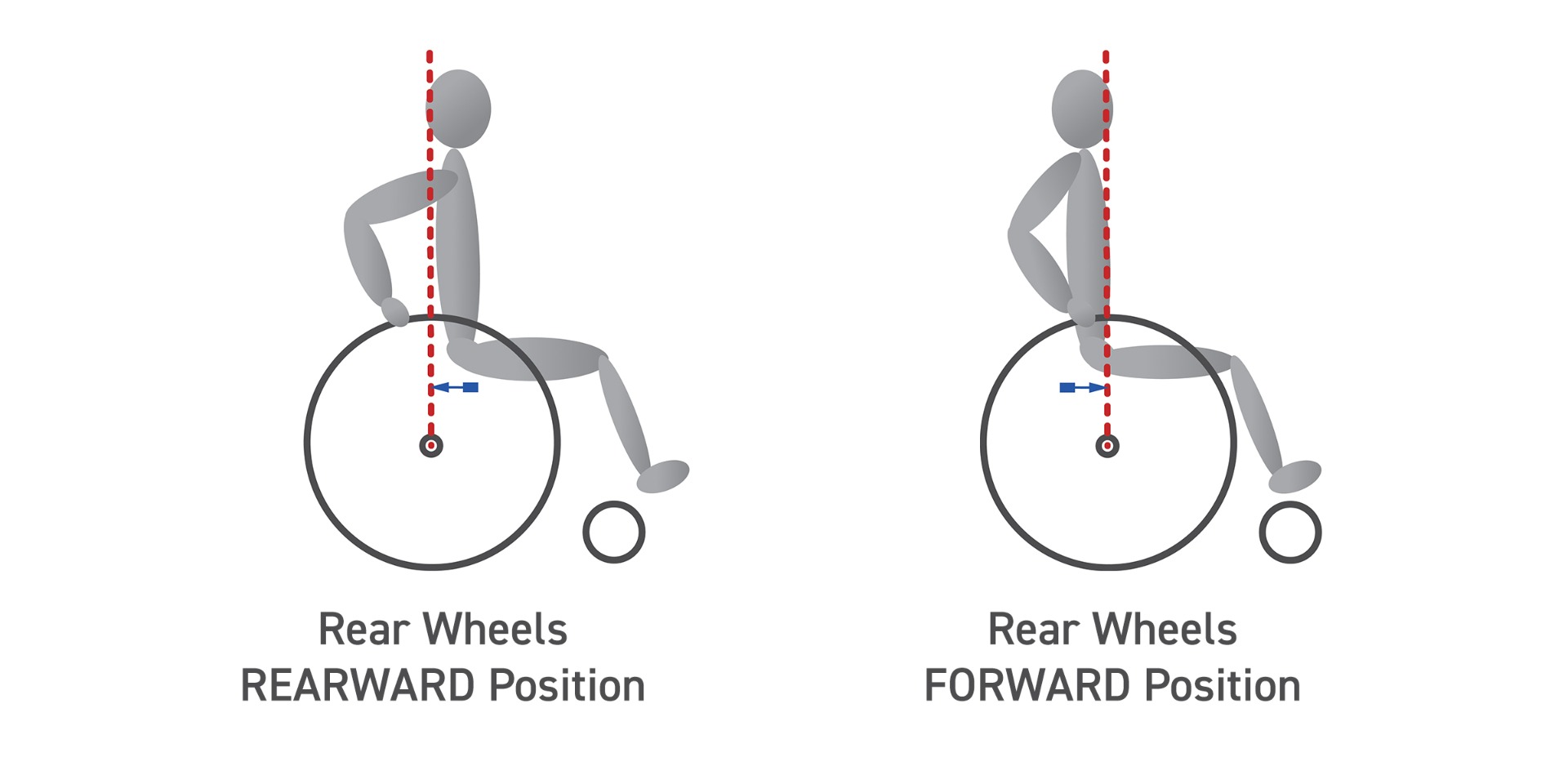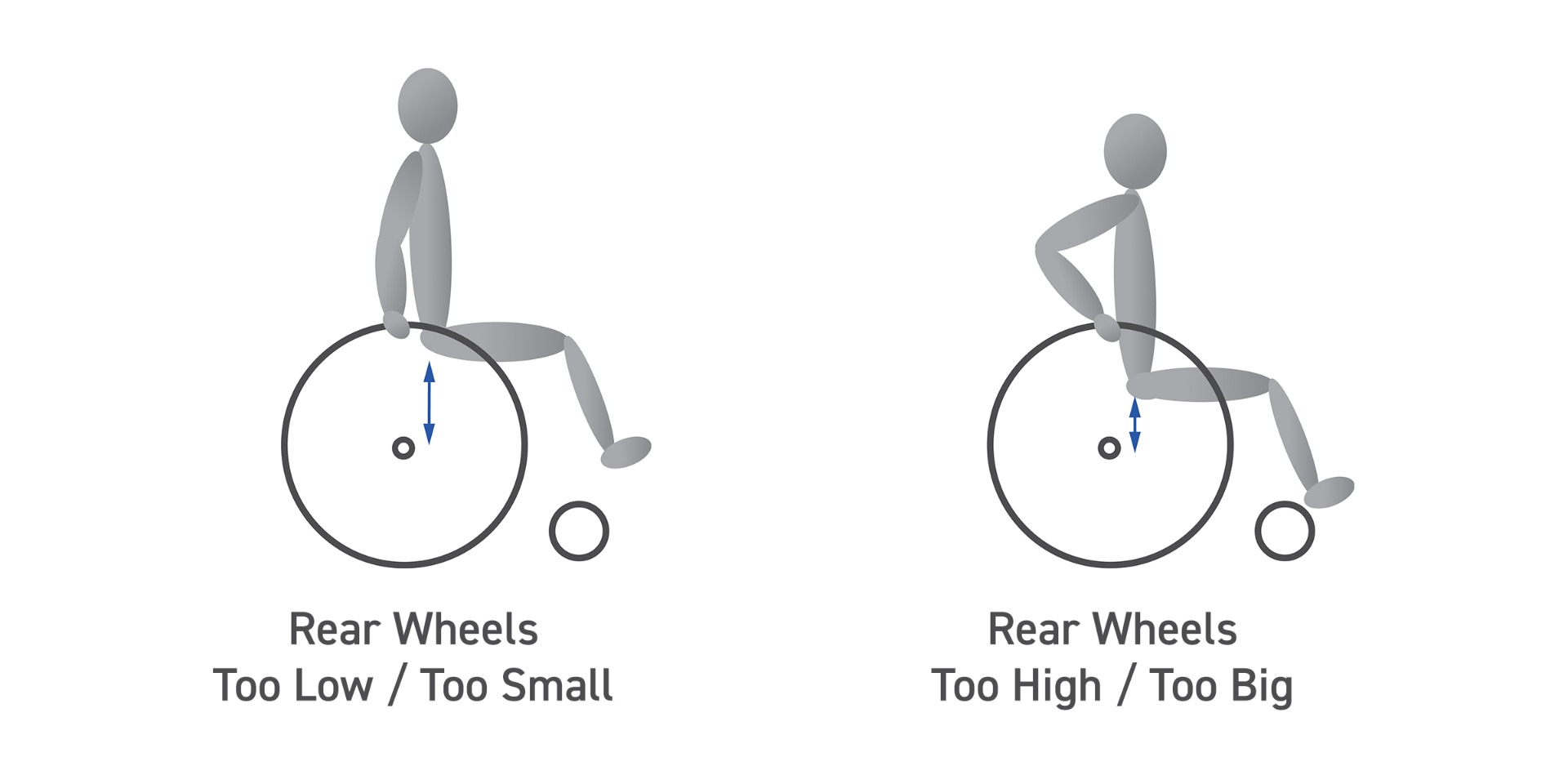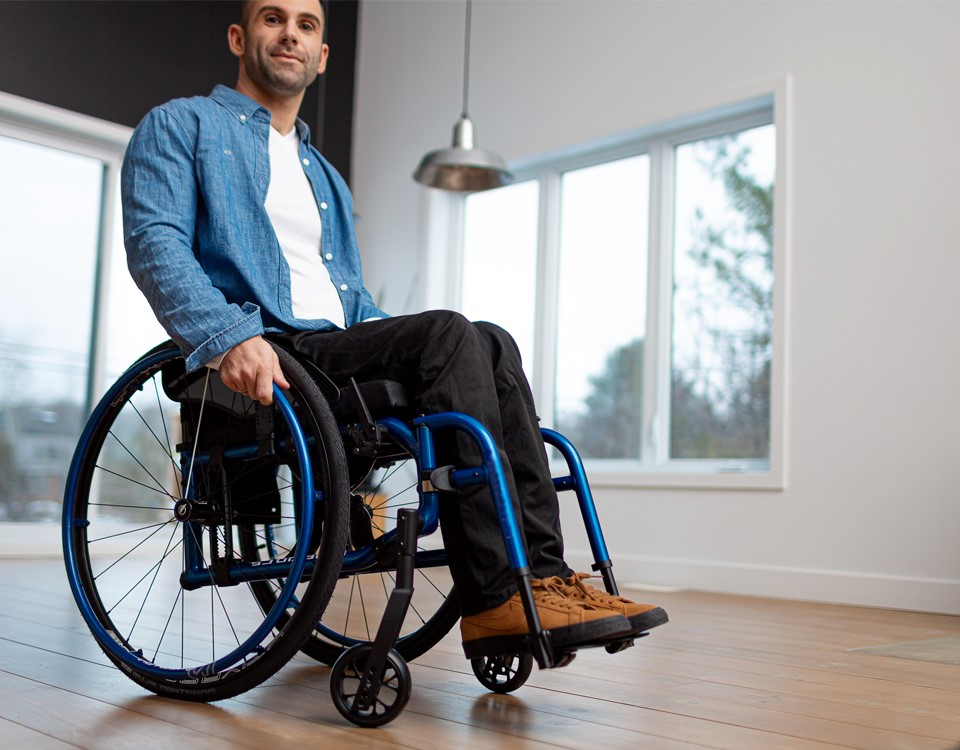Rear wheels position 101
When configuring a wheelchair, the importance of rear wheels positioning can’t be overstated. Properly positioned rear wheels ensure effective propelling and also reduce the risk of injuries from upper-limb overuse.
When configuring a wheelchair, the importance of rear wheels positioning can’t be overstated. Properly positioned rear wheels ensure effective propelling and also reduce the risk of injuries from upper-limb overuse.
The goal of correctly positioning the rear wheels is to give the user optimal access to them. When sitting in a well-adjusted wheelchair, you should be able to reach the wheel hub with the tip of the middle finger. This is an indicator that the center of mass is well positioned over the wheel hub, with elbows at around 100-120 angle when holding the top of the handrims.
When building a custom wheelchair, achieving optimal rear wheels position is done by making horizontal and vertical adjustments to the wheels. Many of those adjustments are made by the assembly technicians while some will also be made by your healthcare professional upon receiving the chair.
Adjusting the rear wheels horizontally forwards or backwards affects the center of gravity. Adjusting center of mass and center of gravity will have an impact on stability as it influences the weight distribution between the rear wheels and the front casters. Rear wheels horizontal position is of great importance to the wheelchair performance and overall maneuverability.
Back wheels adjusted forward are usually most efficient as it positions the center of gravity rearwards and reduces weight put on the front casters. However, it’s also important to note that this type of adjustment will make the wheelchair less stable as the back wheels take more of the weight. Users with this type of configuration will have to be more comfortable in their wheelchair skills.

When back wheels are adjusted rearward (as shown on the right image), the wheelchair will be a lot more stable by a more even weight distribution between front casters and rear wheels. However, the arms will have to give more efforts as elbow is excessively flexed. The stability gained can be beneficial for some types of users, but inefficient strokes could cause pain and injuries.
The vertical position of the back wheels affects seat-to-floor height which is key to the user’s comfort and to avoid upper body injuries.

When seat-to-floor distance is too high, access to the surface of the handrims is reduced resulting in more repetitions needed to cover a certain distance. But if the distance is too low, meaning the user is closer to the floor, can cause shoulders to be elevated and elbows excessively bent, eventually causing injuries.
With the user’s comfort and wellbeing in mind, Motion Composites develops wheelchairs with some of the most precise wheel adjustments in the industry. Certified healthcare professionals will have the knowledge and skills required to calculate the specifications that are ideals for the patient’s measurements, lifestyle and condition.
